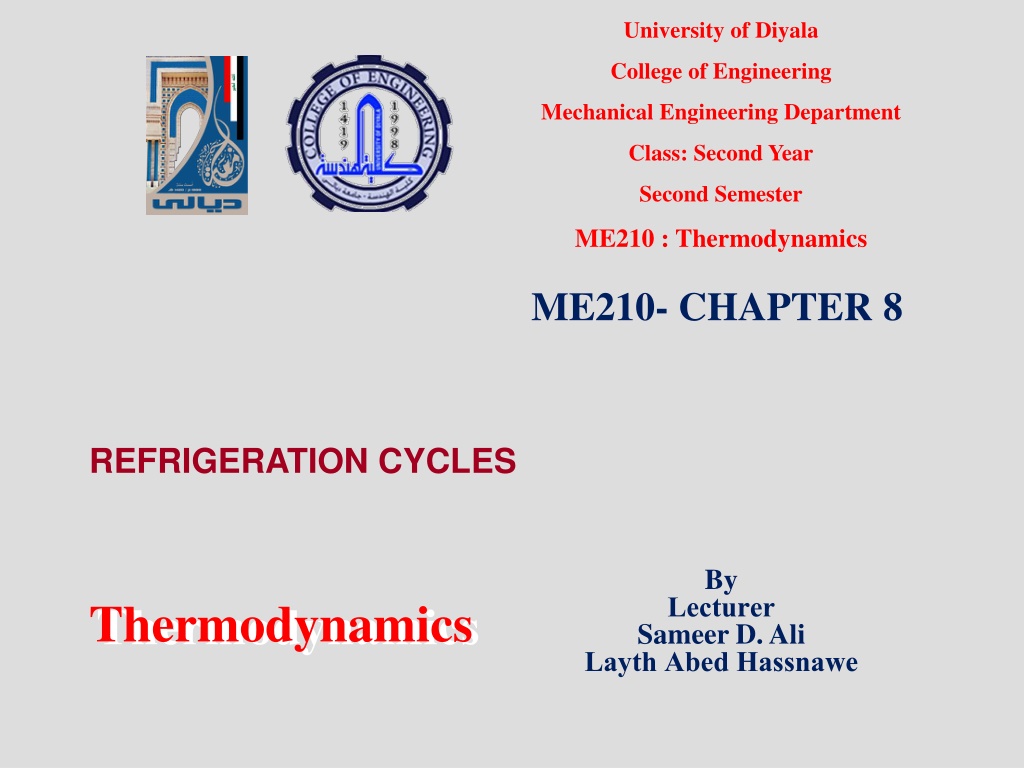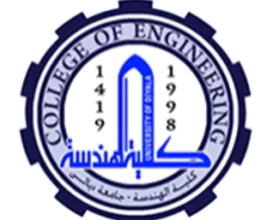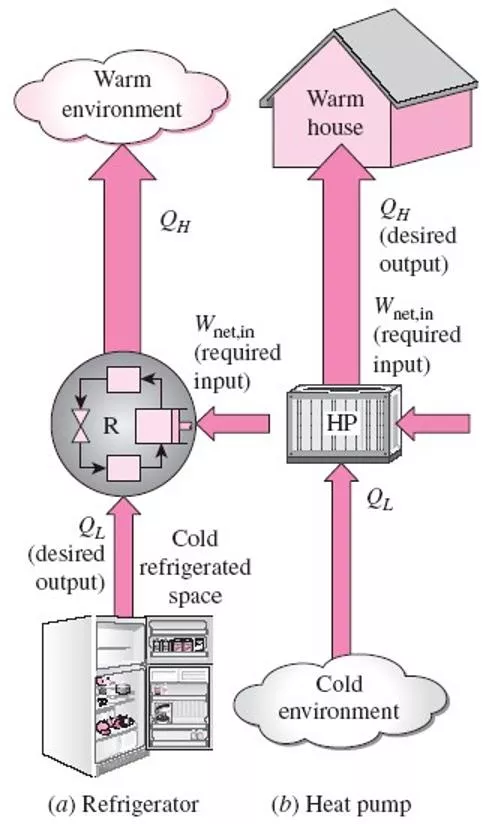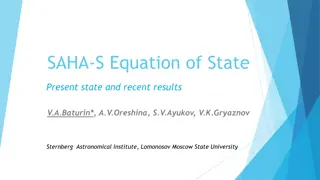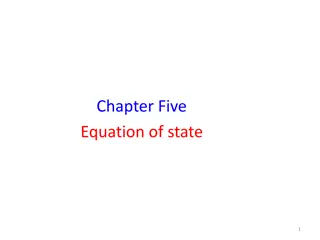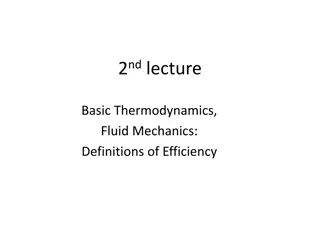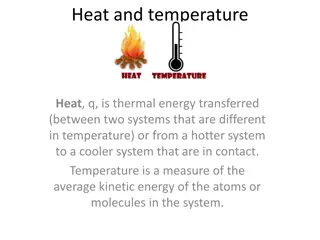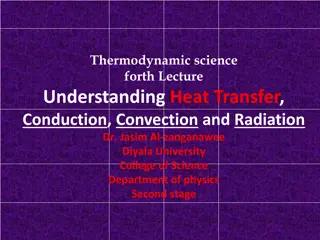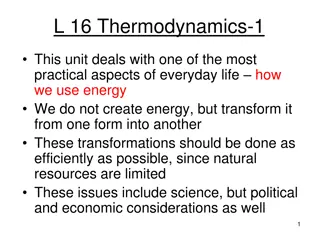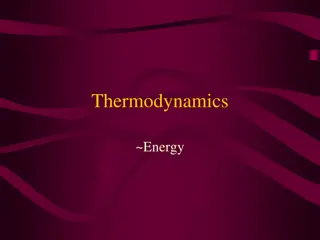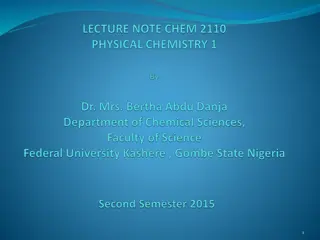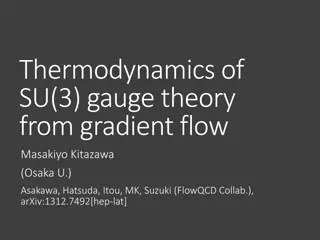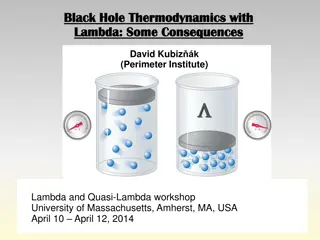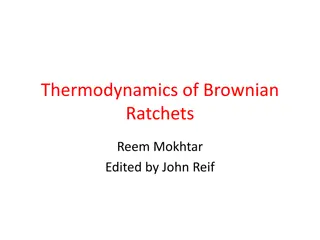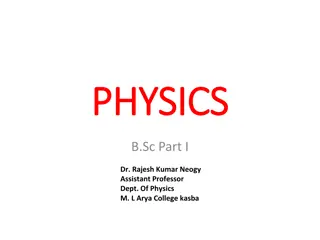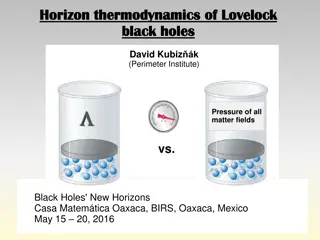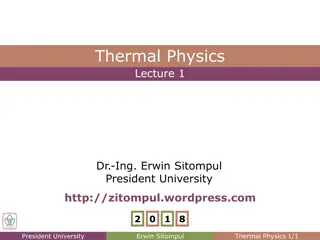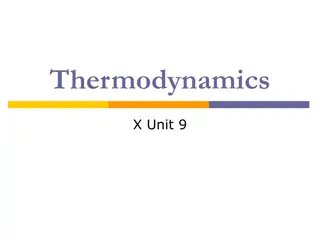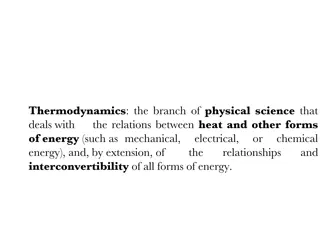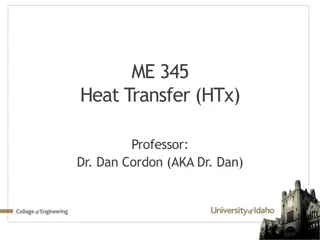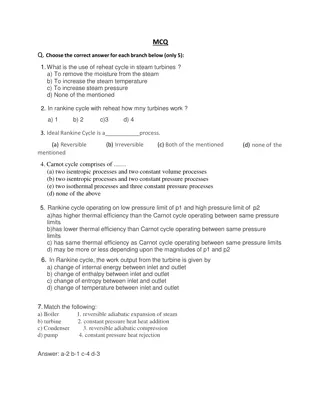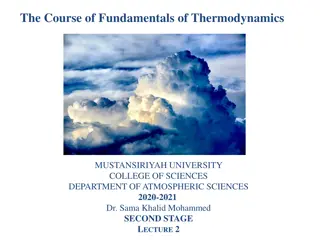Thermodynamics
Refrigeration cycles involving refrigerators and heat pumps are explored, including the ideal vapor-compression cycle and the reversed Carnot cycle. Learn about the efficiency and practicality of different cycles in transferring heat between temperature regions.
Download Presentation

Please find below an Image/Link to download the presentation.
The content on the website is provided AS IS for your information and personal use only. It may not be sold, licensed, or shared on other websites without obtaining consent from the author.If you encounter any issues during the download, it is possible that the publisher has removed the file from their server.
You are allowed to download the files provided on this website for personal or commercial use, subject to the condition that they are used lawfully. All files are the property of their respective owners.
The content on the website is provided AS IS for your information and personal use only. It may not be sold, licensed, or shared on other websites without obtaining consent from the author.
E N D
Presentation Transcript
University of Diyala College of Engineering Mechanical Engineering Department Class: Second Year Second Semester ME210 : Thermodynamics ME210- CHAPTER 8 REFRIGERATION CYCLES By Lecturer Sameer D. Ali Layth Abed Hassnawe Thermodynamics
REFRIGERATORSAND HEAT PUMPS The transfer of heat from a low-temperature region to a high-temperature one requires special devices called refrigerators. Another device that transfers heat from a low-temperature medium to a high- temperature one is the heat pump. Refrigerators and heat pumps are essentially the same devices; they differ in their objectives only. The objective of a refrigerator is to remove heat (QL) from the cold medium; the objective of a heat pump is to supply heat (QH) to a warm medium. for fixed values of Q and Q L H 2 Thermodynamics-CH11
THE REVERSED CARNOT CYCLE The reversed Carnot cycle is the most efficient refrig. cycle operating between TLand TH. It is not a suitable model for refrigeration cycles since processes 2-3 and 4-1 are not practical because Process 2-3 involves the compression of a liquid vapor mixture, which requires a compressor that will handle two phases, and process 4-1 involves the expansion of high- moisture-content refrigerant in a turbine. Both COPs increase as the difference between the two temperatures decreases, that is, as TL rises or TH falls. Schematic of a Carnot refrigerator and T-s diagram of the reversed Carnot cycle. 3
THE IDEAL VAPOR-COMPRESSION REFRIGERATION CYCLE The vapor-compression refrigeration cycle is the ideal model for refrigeration systems. Unlike the reversed Carnot cycle, the refrigerant is vaporized completely before it is compressed and the turbine is replaced with a throttling device. This is the most widely used cycle for refrigerators, A-C systems, and heat pumps. Schematic and T-s diagram for the ideal vapor-compression refrigeration cycle. 4
The ideal vapor-compression refrigeration cycle involves an irreversible (throttling) process to make it a more realistic model for the actual systems. Replacing the expansion valve by a turbine is not practical since the added benefits cannot justify the added cost and complexity. Steady-flow energy balance An ordinary household refrigerator. The P-h diagram of an ideal vapor- compression refrigeration cycle. 5
ACTUAL VAPOR-COMPRESSION REFRIGERATION CYCLE An actual vapor-compression refrigeration cycle differs from the ideal one owing mostly to the irreversibilities that occur in various components, mainly due to fluid friction (causes pressure drops) and heat transfer to or from the surroundings. The COP decreases as a result of irreversibilities. DIFFERENCES Non-isentropic compression Superheated vapor at evaporator exit Subcooled liquid at condenser exit Pressure drops in condenser and evaporator Schematic and T-s diagram for the actual vapor- compression refrigeration cycle. 6
